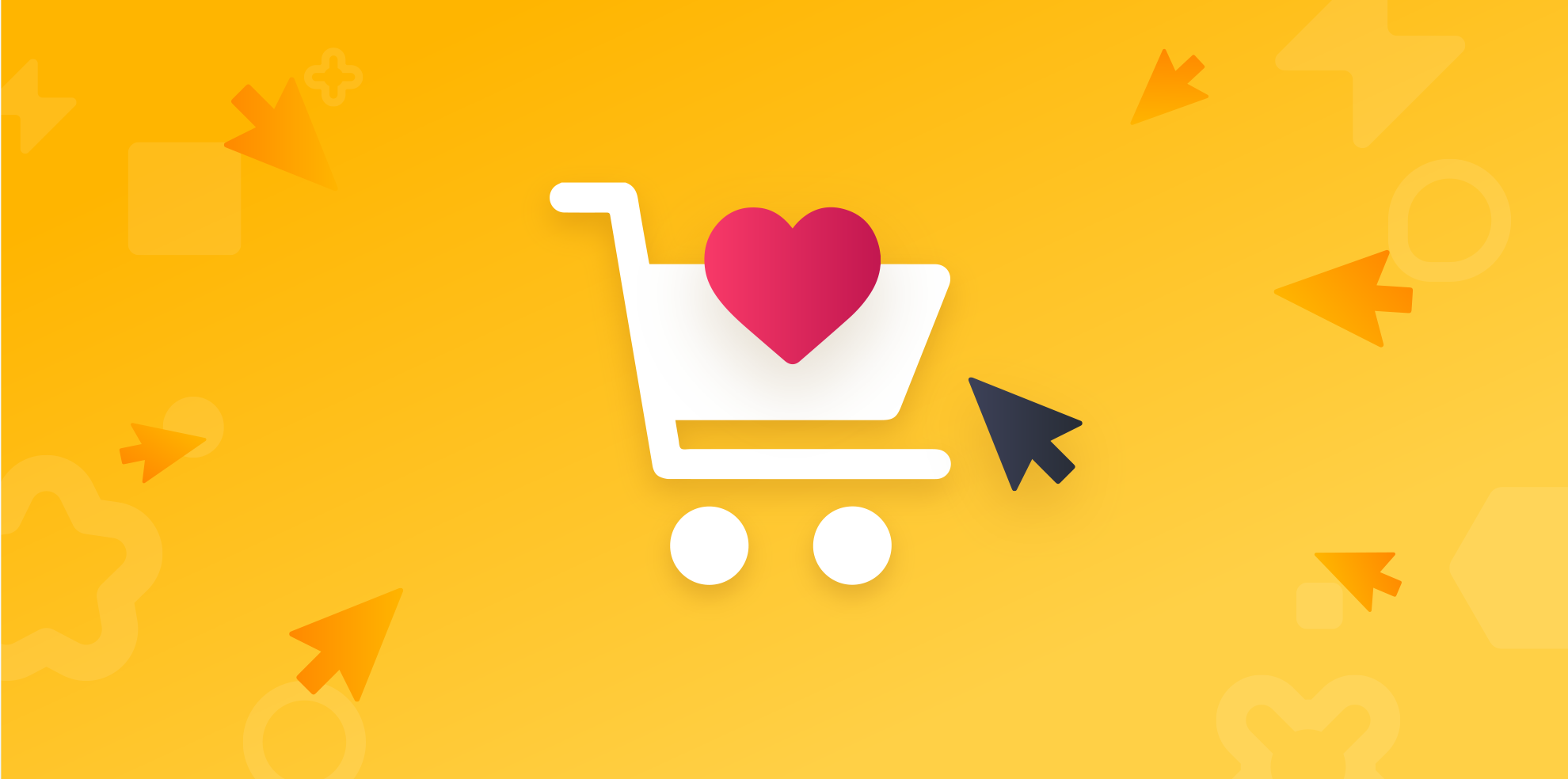
If I’ve developed a sense of loyalty to a brand, there’s often an emotional connection tied to this loyalty.
For example, there’s an independent houseplant shop down the road from me – with a great range of products, excellent customer service, and reliable recommendations that are always appropriate for me. If I’m shopping elsewhere and see a nice plant, I can’t bring myself to buy it when I know I could give my business to a brand I already know. Why should I risk buying from a new brand when I know I’ve had great experiences elsewhere before? Crucially it feels, for lack of a better word, unfair to give my business to someone else.
It’s this feeling ecommerce sites are trying to tap into daily, to build up that emotional connection with their customers and develop a loyal following. It’s no wonder why – research shows loyal customers spend 33% more than new prospects. But how to build and, importantly, maintain that loyalty? Let us give you some tips on improving customer loyalty in ecommerce.
Monitor your communication channels and make them accessible
Talking to someone at your brand should be easy and reliable. A customer should know exactly where to go on your website to get a message to you within seconds – if they’re having to click through several pages of content to get to the right place, or stuck in an endless loop with a poorly maintained customer service chatbot who can’t connect them to a human, you’re failing a customer when they need your attention the most.
Make sure you’re actively monitoring all of these communication channels, too. Different customers might want to get hold of you in different ways:
- Phone calls
- Emails
- Social media messages and comments – Facebook, Instagram, Twitter, TikTok…
- Live chats
Research has shown 40% of customers expect a response to their social media messages within an hour. If you’re not going to be able to monitor these communication channels and respond effectively, don’t offer them. Limit your communication channels to what you can manage and respond on those until you can reliably add more options.
Take advantage of wish lists
Wish lists are a simple feature on an eCommerce site that can be immensely valuable when used well. Make the benefits of using one obvious for your customer – if they add to their wish list, will they be alerted if the price changes? Will you let them know if stock levels change? A wish list is an excellent way to open up another reason for you to get in touch with your customers with genuine information about products that they’ve told you they want updates on.
Better still, make your wish lists sharable so that customers can give these lists to their friends easily – regardless of whether that’s for gifting purposes or simply to share products they like with people they know, it’s all more exposure for your brand.
And use them to tailor your product recommendations behind the scenes, making your email communications all the more relevant and personal for each customer. The more you show customers you know them, the more they’ll engage with your content.
Make interactions with your brand positive and memorable
Customers are more likely to come back if they have an experience with you that’s more interesting than their average eCommerce experience, so find ways to stand out from the crowd. Gamify your promotions, use unique brand messaging, engage proactively with customers on social media, or use a tool like Nibble.
Nibble is an AI chatbot that empowers customers to make an offer on your products and engages them in an instant one-on-one negotiation. Within 60 seconds they can make a personalised deal and checkout on your store as normal – no log-in needed, no interference with the checkout journey.
On occasions where a customer doesn’t have a positive interaction with your brand, don’t ignore it – act quickly. Reach out and try to solve their problem; even if you don’t fix the issue, often just approaching customers with a genuine desire to listen to their complaints can turn a negative experience into a more positive one.
Develop a loyalty rewards program
A loyalty program is a great way to encourage successive purchases from customers. Gamify the experience – use points, or stars, or badges, anything that can make customers want to shoot for that next level or reward. Investing in a loyalty program can do wonders for referrals, too: over 70% of consumers are more likely to recommend a brand if it has a good loyalty program.
If you’re using a loyalty program, make sure it rewards people quickly when they first sign up for it. There’s no use in a loyalty plan that only rewards users after months of work. Have a sign-up bonus, a triple-points effect on first purchase, something that can give new adopters a head-start towards their first reward.
And speaking of the rewards, make sure the rewards are worth aiming for. If your first reward is an irrelevant gift or tiny discount in exchange for big purchases, who’s it going to influence? Your loyalty campaign should actively encourage people to spend more with you – not just be something that accrues in the background. If your loyalty plan isn’t actively driving more purchases, question how you can improve what it offers. Be generous, and users will pay you back with more frequent shopping.
Personalise your communications
This goes far beyond using their name in marketing emails – though it’s obviously a good start. Send communications that are specifically tailored to users at the perfect time for products you know they’re interested in. Rather than spamming all of your customers with the same email and hoping your message accurately appeals to 30% of them, use data from your site to develop specific messages:
- Welcome emails with first-time deals and introductions to your brand
- Follow-up emails after purchases asking for feedback or answering product questions
- Product recommendation emails based on their purchase and wish list history
- Abandoned cart emails with discounts to tempt shoppers back
- Special promotions for your most loyal customers
The more you can put a face to your brand the better – this is where strong social media communication and SMS messaging can really help. These tools engage with customers more directly than email, can feel more personal, and make your communication efforts more public.
Keep customers involved in your business
Make customers feel like they are a part of the journey of your business, and they’ll reward you by getting more involved. Show them upcoming features in email updates, ask their opinion on changes you’re making and implement their feedback. Don’t do this quietly or feel embarrassed to take their advice – shout about changes you make directly due to customer feedback. People love knowing they’re being listened to, and they’re more likely to engage with you as a result.
Email surveys are great, but don’t just involve customers that way. Ask for opinions on social media, run polls, have a quick feedback button on part of your website – these can all give you a variety of quantitative and qualitative data to reflect on and actively show browsing users that you’re a brand who listens to their loyal customers.
There’s always room for improvement
That’s a brief overview of how to encourage customer loyalty. Never stop thinking of ways to improve loyalty, as the data out there continues to stress the importance of nurturing existing customers. Shopify have previously stated in one of their blogs that at least 60% of the daily sales of well-established stores typically come from existing customers.
Think about the brands you feel loyal to, and ask what built up that connection – there will be elements here you can emulate on your own ecommerce site. Ultimately, long-term customer loyalty comes down to delivering consistent positive experiences and fostering communication that doesn’t feel one-sided.
Interested in Nibble?
